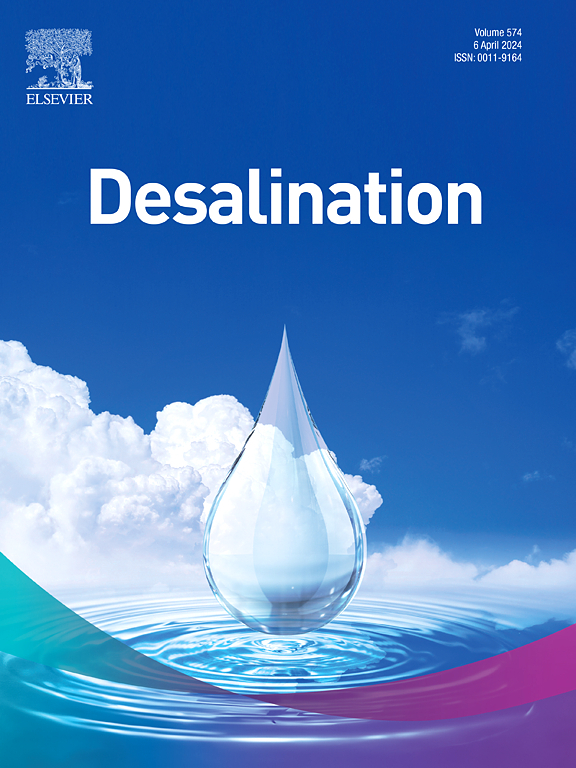Rapid processing of dispersed hydrate-based purification for high-yield seawater desalination and wastewater treatment
IF 8.3
1区 工程技术
Q1 ENGINEERING, CHEMICAL
引用次数: 0
Abstract
Green utilization and sustainable desalination based on hydrate formation have attracted considerable attention. However, its industrial application is limited by slow kinetics and low final-conversion considering hydrate phase change. In this study, we creatively present a desalination approach of dispersed hydrate formation by incorporating the non-ionic surfactant Span 80. The addition of Span 80 enhanced the dispersion of cyclopentane (CP) in saline solution and generated the micron emulsion; as a result, the contact of the host water molecules and the guest molecules increased and the CP hydrate formation accelerated. Meanwhile, a maximum water yield of 92.8 % was achieved and the corresponding growth percentage of 97.5 % was realized comparing without Span 80 in a 3.5 wt% NaCl solution. In addition, this dispersed approach of hydrate-based desalination (HBD) also showed great performance in high concentration wastewater treatments like the solutions of saline and heavy metal. A three-stage purification strategy could produce the clean water meeting the stringent drinking water standard. Additionally, this approach exhibited notable pH tolerance under both strongly acidic and alkaline conditions. The results also demonstrated that Span 80 exhibits impressive self-separation recovery characteristics and cycling stability. These findings provide a robust academic foundation for advancing the feasibility and sustainability of the dispersed HBD in practical seawater desalination applications.
求助全文
约1分钟内获得全文
求助全文
来源期刊

Desalination
工程技术-工程:化工
CiteScore
14.60
自引率
20.20%
发文量
619
审稿时长
41 days
期刊介绍:
Desalination is a scholarly journal that focuses on the field of desalination materials, processes, and associated technologies. It encompasses a wide range of disciplines and aims to publish exceptional papers in this area.
The journal invites submissions that explicitly revolve around water desalting and its applications to various sources such as seawater, groundwater, and wastewater. It particularly encourages research on diverse desalination methods including thermal, membrane, sorption, and hybrid processes.
By providing a platform for innovative studies, Desalination aims to advance the understanding and development of desalination technologies, promoting sustainable solutions for water scarcity challenges.
 求助内容:
求助内容: 应助结果提醒方式:
应助结果提醒方式:


